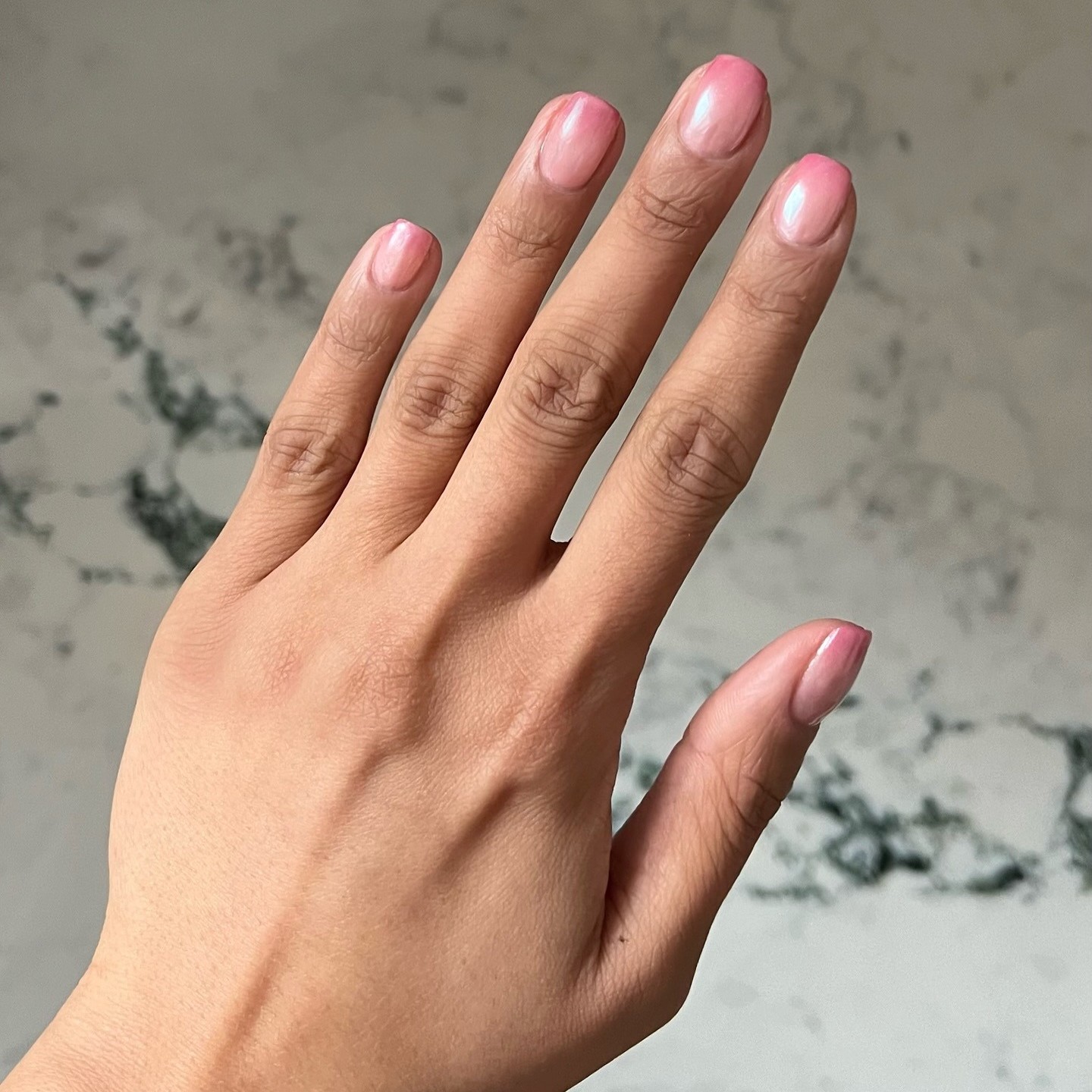At-Home Dermaplaning Is All Over TikTok, But Aestheticians Want You to Know 5 Things
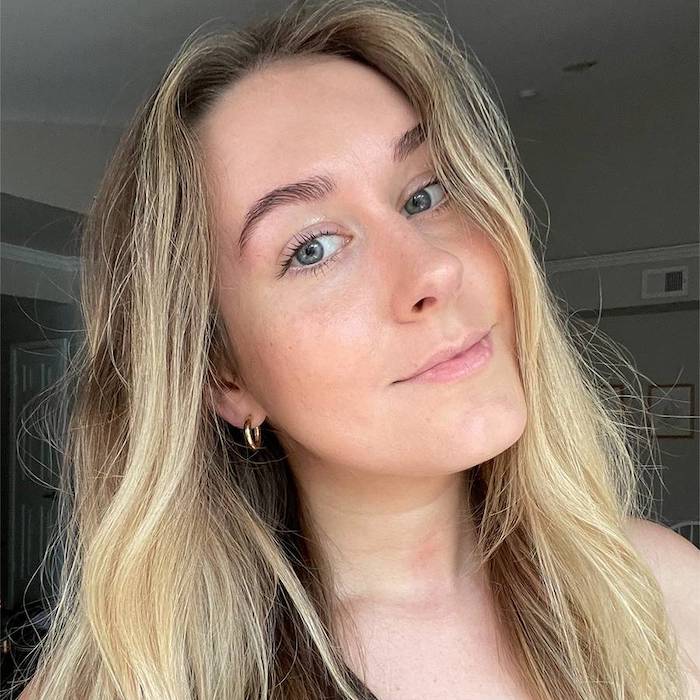
Scroll through the skincare side of Instagram and TikTok, and you'll come across countless at-home dermaplaning videos. They usually start with an up-close view of peach fuzz on a person's face. Then, a small blade works across the skin in short strokes, removing the peach fuzz and any dead skin with it. Finally, you'll see a shot of smooth, glowing skin. The entire process looks quick, easy, and effective, and it is, but only if you know what you're doing.
That's why I reached out to two aestheticians. I wanted to know how exactly I should perform at-home dermaplaning for the safest, most effective results. I asked, and they answered. Ahead, learn the answers to frequently asked questions and discover five expert-approved tips and tricks. Smooth skin is right this way.
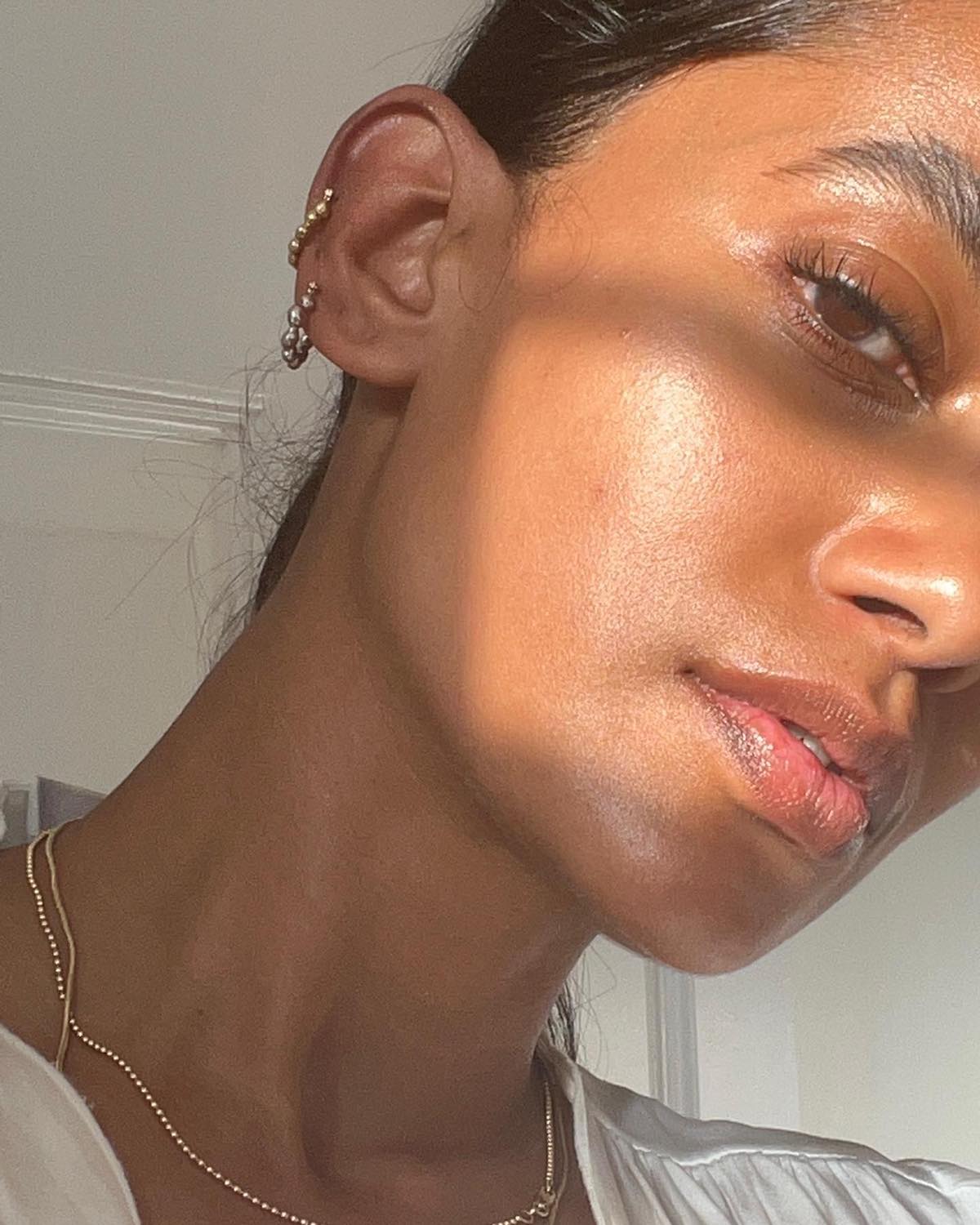
What Is Dermaplaning?
Dermaplaning is the practice of using a blade to remove dead skin cells and vellus hair, which is more commonly referred to as "peach fuzz." Think of it like shaving the face—it removes hair and provides physical exfoliation by gently scraping off dead skin. (And, no, it doesn't cause hair to grow back darker or thicker. That's a myth.) It provides instant and long-term benefits, including smoother, softer skin.
The Benefits of Dermaplaning
Alicia Warner, aesthetician at FactorFive, says dermaplaning offers multiple benefits that go beyond hair removal. It can improve your skin as a whole.
Expert Tip #1: Dermaplaning isn't just for removing peach fuzz. It offers multiple skin benefits.
Below, she shares a comprehensive list of the benefits of dermaplaning.
- Smoother, Brighter Skin: "The treatment reveals fresh, glowing skin and improves its texture."
- Enhanced Product Absorption: "By exfoliating the skin, it allows products to penetrate more effectively, ensuring maximum results."
- Flawless Makeup Application: "Makeup applies much more smoothly, giving you a seamless, flawless look."
- Improvement in Certain Skin Concerns: "It helps soften fine lines, reduce the appearance of mild acne scars, and revitalize dull skin."
- Exfoliation: "With no harsh chemicals involved, it's a noninvasive way to rejuvenate your complexion."
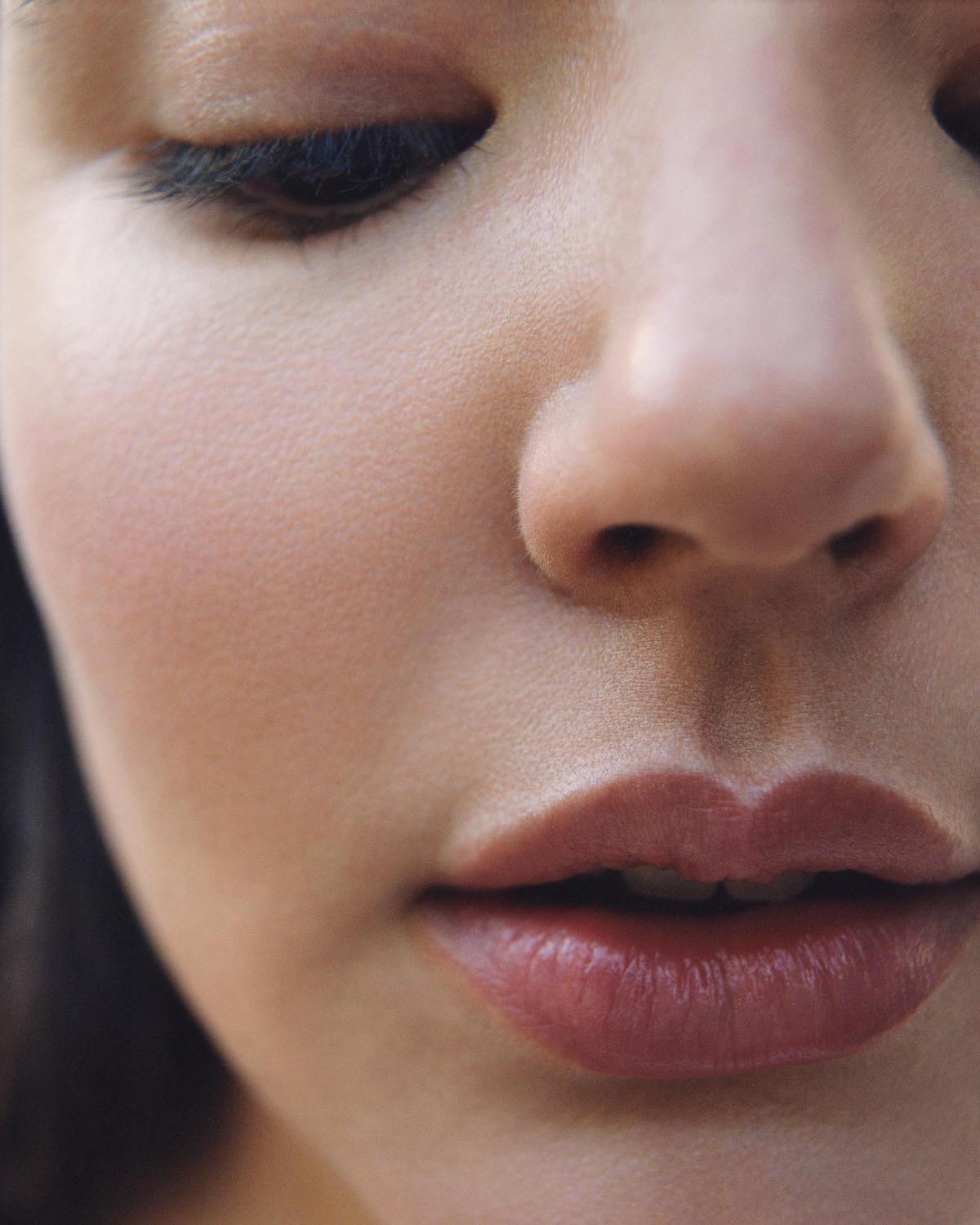
The Skin Types It's Best For
Both experts agree that dermaplaning is suitable for most skin types, with a couple of exceptions. Warner says it's best suited for dry and combination skin and "anyone seeking smoother, softer skin and looking to boost the effects of their skincare products, especially anti-aging and hydrating treatments."
Expert Tip #2: Avoid dermaplaning if you have acne, rosacea, eczema, or psoriasis.
However, if you have active acne breakouts, rosacea, eczema, or psoriasis, you should avoid dermaplaning. "Acne-prone skin types should avoid [dermaplaning]," Temple says. "It can disrupt the barrier of the skin or spread bacteria. [Those with] psoriasis or rosacea flare-ups should also avoid dermaplaning, as it can also disrupt, damage, or cause irritation to the skin barrier." In other words, it could do more harm than good in these cases.
At-Home vs. In-Office Dermaplaning
There's in-office dermaplaning, and then there's at-home dermaplaning. A trained technician performs the former, whereas anyone can perform the latter. According to Warner, there are significant advantages to getting it done by a professional. "As an aesthetician, I use medical-grade surgical blades, which are sharper and more effective than the tools available for at-home use. These allow for a deeper and more precise exfoliation, leading to better results," she says. Then there are treatment and environmental factors to think about. "In a professional setting, I can assess your skin type and tailor the treatment, often using products to support skin regeneration and hydration," she says. "Licensed aestheticians perform dermaplaning in a clean, sterile environment, reducing the risk of infection, which can be a concern with at-home tools."
Nichelle Temple, aesthetician and founder of Inderma Studio, agrees. "A licensed and certified provider is the safer and more effective option. A professional provider will have been trained in areas such as sanitation and technique, can assess if it's a safe and suitable treatment for the individual, will give a more precise dermaplane while being able to see missed hairs, and can safely determine when to stop if the skin is showing irritation," she says.
Despite this, many people opt for at-home dermaplaning to save time and money. While it's a good option for many people who don't have the resources or access to professional dermaplaning, there are some risks involved. Keep scrolling to learn everything you need to know.
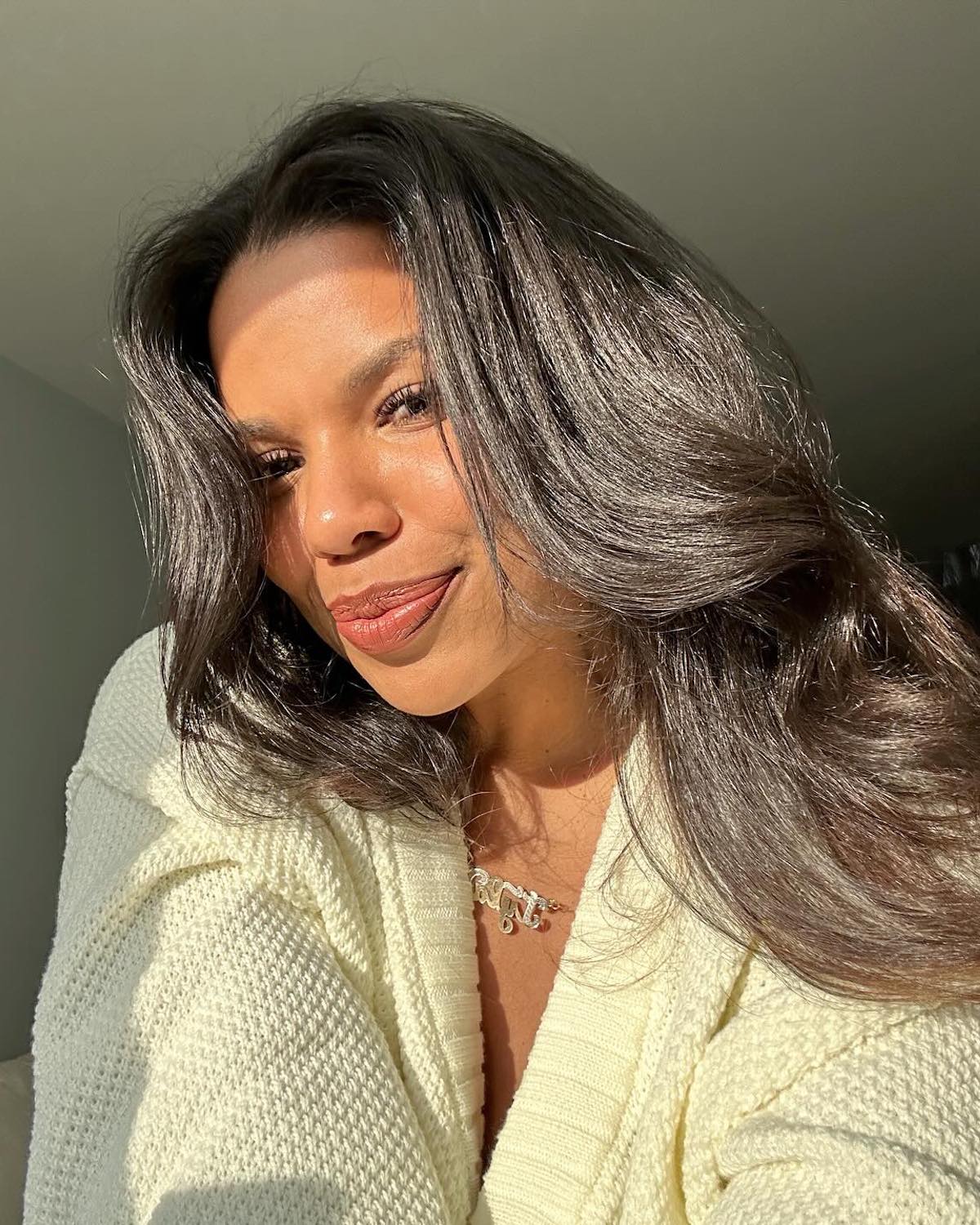
How to Perform At-Home Dermaplaning
If you're determined to proceed with at-home dermaplaning, the experts have some advice to share. First, Warner recommends reaching for a high-quality dermaplaning tool. "Choose a dermaplaning tool designed specifically for home use, such as single-use, sterile blades. Avoid professional-grade tools unless you're properly trained to use them," she says.
Expert Tip #3: Thoroughly cleanse and dry your skin before dermaplaning.
Next, reach for the right skincare products, including a cleanser, hydrating serum, and SPF. The first one should be used before dermaplaning to sanitize your skin and prevent any bacteria transfer. The second two should be used after dermaplaning to hydrate and replenish the fresh skin.
Warner recommends FactorFive's Gentle Cleanser ($42) before dermaplaning because "it effectively removes makeup, dirt, and oil without stripping the skin's moisture," and FactorFive's Nourishing Silk Serum ($189) after because it "is enriched with hyaluronic acid and peptides to lock in moisture and calm the skin."
Expert Tip #4: Hold the skin taut and move the dermaplaning tool at a 45-degree angle in short strokes.
Proper technique is crucial. Warner instructs gently pulling the skin taut in the area you're dermaplaning. With your other hand, hold the tool at a 45-degree angle. "Make gentle, downward strokes across the face," and "use light pressure. Let the blade glide lightly across the skin; avoid pressing too hard to prevent irritation or cuts."
Temple seconds this, saying, "Try to maintain light quick feather-like strokes, and do not harshly press the skin. … Don't overdo it. If your skin is showing redness, stop and just leave that extra hair. It's not worth a reaction. Do not dermaplane over any breakouts or cysts."

How to Care for Your Skin After At-Home Dermaplaning
After dermplaning, your skin is fresher and more sensitive to certain skincare products, ingredients, and environmental aggressors like the sun. Warner recommends rinsing your face, patting it dry, and applying a hydrating serum, moisturizer, and SPF.
Expert Tip #5: Always apply SPF after dermaplaning.
"Always apply sunscreen with at least SPF 30, as dermaplaning makes your skin more sensitive to sun exposure," Warner says. She also recommends steering clear of exfoliating acids like AHAs, BHAs, or retinoids for at least 48 hours after dermaplaning to prevent irritation.
Temple recommends sleeping on a clean pillowcase, avoiding touching your skin, cleaning your makeup brushes, and using a new makeup sponge. This will help prevent any problem-causing bacteria from getting to your skin.
Oh, and one more thing. "Do not reuse the blade! Safely throw it away being mindful that people come into contact with the small knife when they bag up garbage and when it's picked up by the trash handlers," Temple says.

Kaitlyn McLintock is a Beauty Editor at Who What Wear. She has 10 years of experience in the editorial industry, having previously written for other industry-leading publications, like Byrdie, InStyle, The Zoe Report, Bustle, and others. She covers all things beauty and wellness-related, but she has a special passion for creating skincare content (whether that's writing about an innovative in-office treatment, researching the benefits of a certain ingredient, or testing the latest and greatest at-home skin device). Having lived in Los Angeles, California, and Austin, Texas, she has since relocated back to her home state, Michigan. When she's not writing, researching, or testing beauty products, she's working through an ever-growing book collection or swimming in the Great Lakes.

